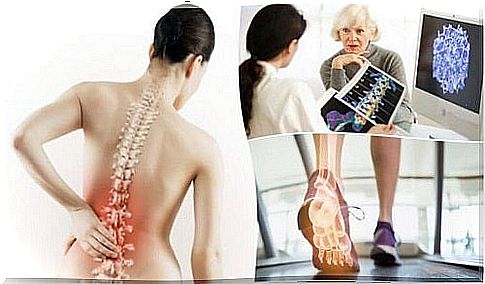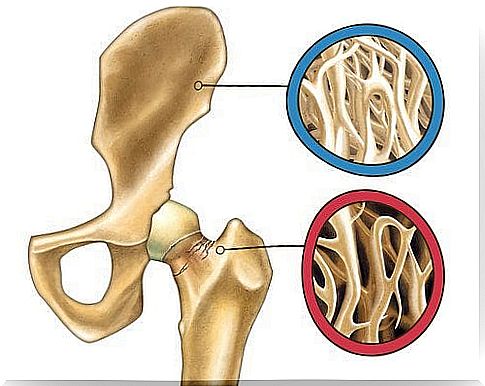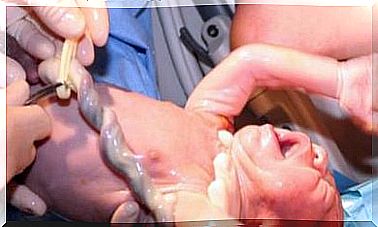6 Essential Information About Osteoporosis

Osteoporosis is a disease of the bone system that can be based on bone decalcification, a deficiency of vitamin D or various genetic factors. This is triggered when the internal microstructure of the bones is affected by wear, the density and ability to support them decreasing dramatically. In today’s article we present 6 essential information about osteoporosis.
Osteoporosis increases the risk of fractures and is accompanied by inflammatory reactions and severe pain. Although this disease is common among the elderly population, some people develop it prematurely due to injuries or habits that damage the bones.
The most worrying thing is that many of us do not realize how severe osteoporosis can be. The absence of obvious symptoms prevents us from realizing that we are sick.
For this reason, it is essential to know some essential information about osteoporosis, such as how it develops. If you have any risk factors, consult a doctor immediately.
Some essential information about osteoporosis
1. Risk factors

Bone weakening usually occurs due to poor absorption of calcium and vitamin D, especially when we reach a certain age.
- Lack of nutrients reduces bone density and can cause fractures and irreversible damage when we are injured or ill.
- Osteoporosis can be influenced by certain genetic factors, but most cases have been associated with hormonal changes that occur in adulthood.
- Excessive consumption of tobacco and alcohol can also increase the risk of osteoporosis.
- Decreased estrogen production after menopause is another important factor.
- You have an increased risk of osteoporosis if you suffer from anorexia or bulimia.
2. Symptoms
Unfortunately, osteoporosis falls into the category of “silent enemies”. Its symptoms do not become visible until the disease has advanced much.
- Sometimes the diagnosis is made after a fracture, without the patient being aware that he is suffering from osteoporosis.
- We can suspect that it is osteoporosis if the patient has decreased in height by more than 5-7.6 cm (2-3 inches).
- Some people develop the so-called “widow’s hump”, which means that the patient becomes hump.
3. Diagnosis, on the list of essential information about osteoporosis

To detect the disease, the patient must undergo an examination that involves measuring bone mineral density (BMD).
- This examination is a low-radiation x-ray that will not take you long and does not cause pain.
- Analysis of the spine or hips could lead to the discovery of a fracture.
- X-rays of other bones are less accurate if the patient has osteoporosis.
4. Prevention
Although many factors can trigger osteoporosis, the inclusion of healthy habits in your daily routine is a key aspect of disease prevention.
- Therefore, it is essential to support optimal absorption of calcium and vitamin D. Include foods that contain these nutrients in your diet.
- The daily calcium intake recommended by the National Osteoporosis Foundation is 1000 mg for adults and 1200 mg for women over 50 and men over 70 years.
- Limit your intake of sodium and saturated fats, these substances inhibit calcium absorption.
- It is important to stimulate the absorption of magnesium, this nutrient preserving bone density.
- Daily exercise is very beneficial, strengthening bones and improving coordination and balance.
5. Medications that can stop or fix the problem

Currently, there are drugs that combat bone loss and help patients avoid serious problems such as fractures.
- These pharmaceuticals include bisphosphonates. They prevent bone degradation by inhibiting the activity of osteoclasts, cells that absorb bone tissue.
- Calcium and vitamin D supplements are also recommended, especially if you find it difficult to get these nutrients from your diet.
- Estrogen treatments help prevent and combat osteoporosis in postmenopausal women.
6. Side effects of treatment
Drug treatments for osteoporosis can be very effective. But it is important to note that in most cases, their continued use can cause side effects. These reactions include:
- Joint and muscle pain
- Esophageal damage
- Burns to the chest
- Arrhythmia and palpitations
Although they are effective against osteoporosis, the medicines mentioned above have a certain “deadline” to give yield. About three years after starting treatment, the doctor will check if the medicines have worked for the patient and if their impact has not been negative.
In some cases, treatment will need to be stopped for a period of time. Continued administration of drugs is dangerous.
The best way to combat osteoporosis is to prevent and store the information presented in this article. If you have a risk factor, have a regular medical check-up.









